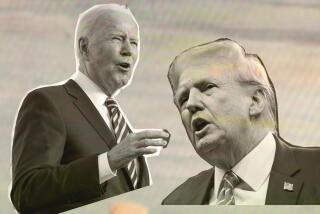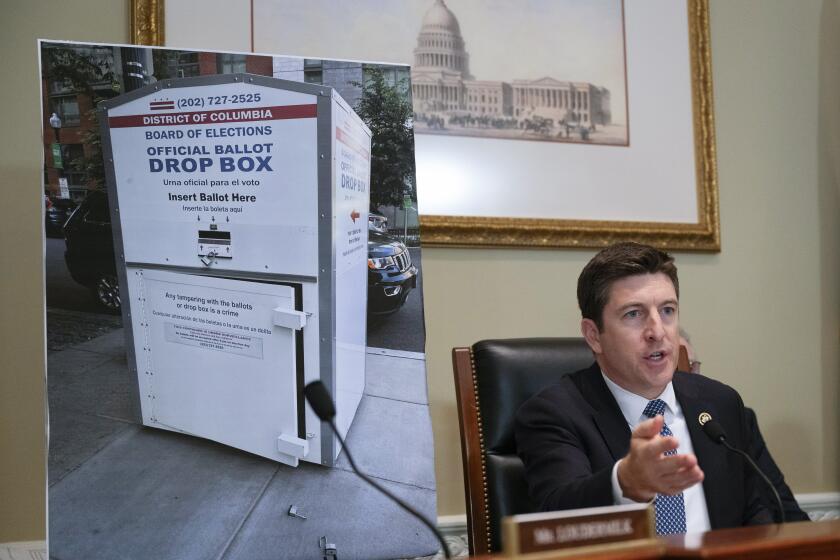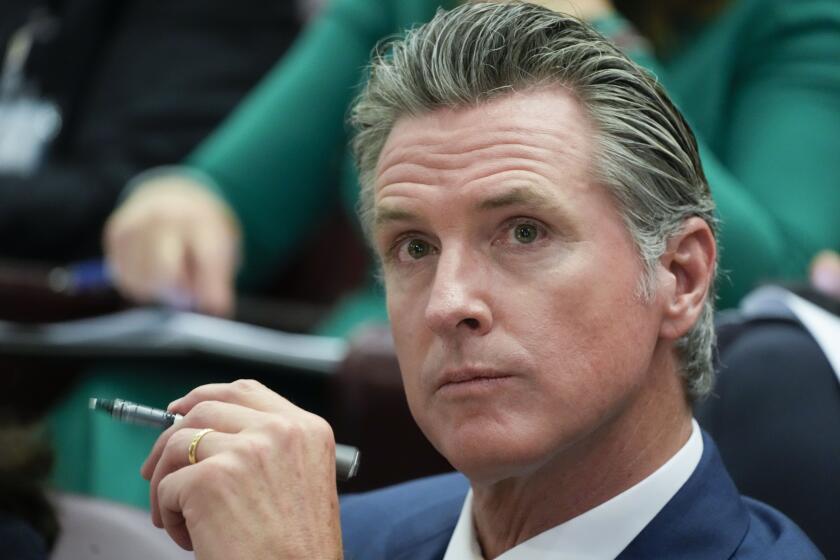Panel Tentatively OKs $1,000 Ceiling on Medicare Patients’ Bills
A House subcommittee Wednesday tentatively approved the biggest expansion of Medicare since the program began in 1965, voting to give the system’s 30 million beneficiaries an unlimited number of government-paid hospital days and imposing a $1,000 ceiling on out-of-pocket spending for doctor bills.
The bipartisan plan, which would cost about $4 billion a year, would be financed by taxing Medicare beneficiaries on a sliding scale. Most people over 65 do not pay federal income taxes and, therefore, would receive the added benefit free.
The cost would vary among the 45% of the elderly who do pay taxes. The cost for each beneficiary would range from $8 a year for those with annual incomes below $10,000 to $424 for those with incomes of $75,000 or more.
“I am delighted we can, for the first time, really do something for the elderly rather than simply have to cut things out of the Medicare budget,” said Rep. Pete Stark (D-Oakland), chairman of the House Ways and Means subcommittee on health. He co-authored the plan with Rep. Bill Gradison (R-Ohio).
The subcommittee is expected to approve the detailed plan formally today, along with several minor amendments. The members agreed in a closed meeting Wednesday to endorse the benefits and financing mechanism.
Currently, Medicare beneficiaries pay $520 for the first day in a hospital, receive the next 59 days free and then pay $130 a day.
Under the Stark-Gradison plan, a patient would pay $520 for the first day and have no other hospital charges. “You stay until you get well or die, and there is no extra cost,” a subcommittee staff member said.
Only 200,000 Medicare beneficiaries a year spend more than 60 days in the hospital. But there is no way of knowing who will get sick and the plan should reassure millions of people worried about the potential costs of long hospital stays, the plan’s supporters say.
For doctor bills, Medicare now pays 80% of the fees established by a government schedule, and the patient pays the other 20%. If a physician charges more than the Medicare schedule, the patient pays the difference from his own pocket.
Cap on Patient Spending
The Stark-Gradison plan would put a $1,000 cap on patient spending. Medicare would pay all bills beyond that limit, provided that the costs are covered by the Medicare-approved schedule. Any additional doctor charges would still be the patient’s responsibility.
More than 1 million people a year spend more than $1,000 on physician bills.
The subcommittee plan provides more extensive benefits than the Reagan Administration’s Medicare overhaul proposal, which calls for a spending limit of $2,000 for combined hospital and doctor bills. The Administration program would be financed by a monthly payment of $4.92 from each Medicare recipient--27 million people over 65 and 3 million disabled people of all ages.
The Stark-Gradison financing proposal is expected to be fought by insurance companies and labor unions, which are vehemently opposed to any taxation of key fringe benefits. Currently, workers are not taxed for benefits such as employer-paid health insurance.
The American Assn. of Retired Persons, which has 23 million members, also is opposed to any taxation of the Medicare benefit, arguing that it would be an unfair imposition.
More to Read
Get the L.A. Times Politics newsletter
Deeply reported insights into legislation, politics and policy from Sacramento, Washington and beyond. In your inbox three times per week.
You may occasionally receive promotional content from the Los Angeles Times.






